Urban Backyard
12 April 2009
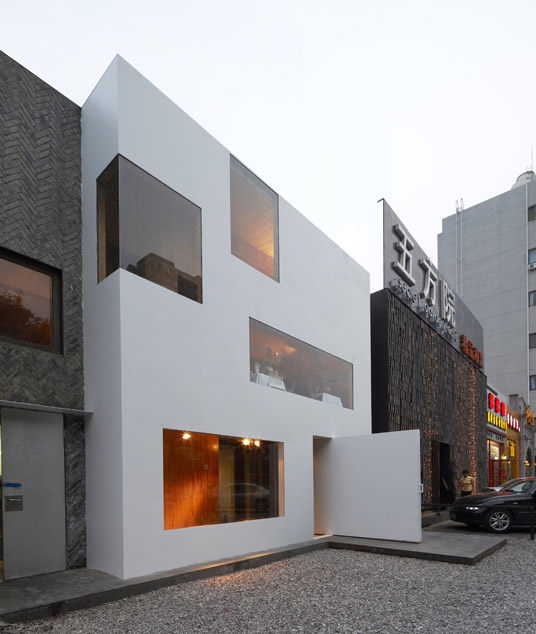
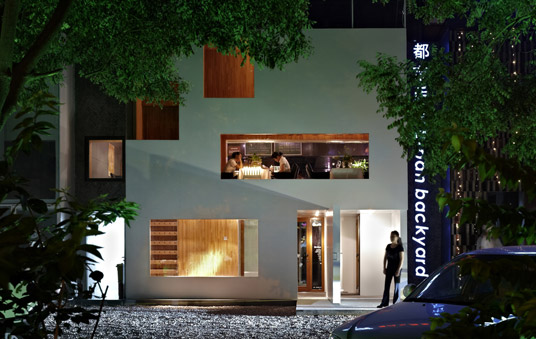
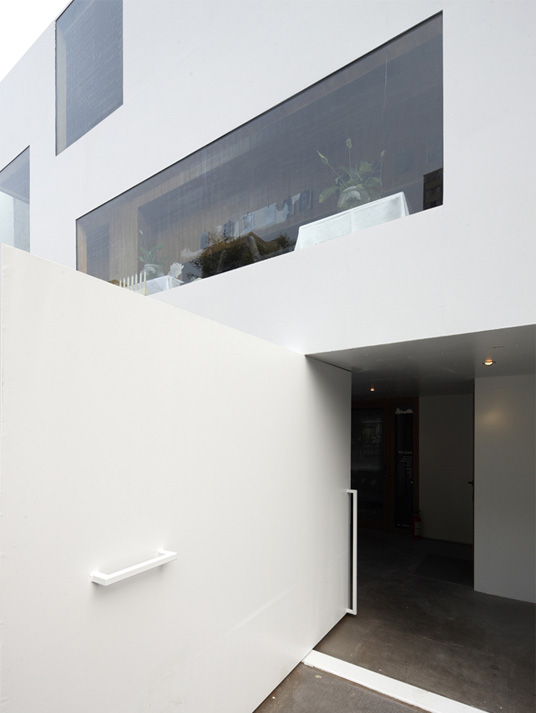

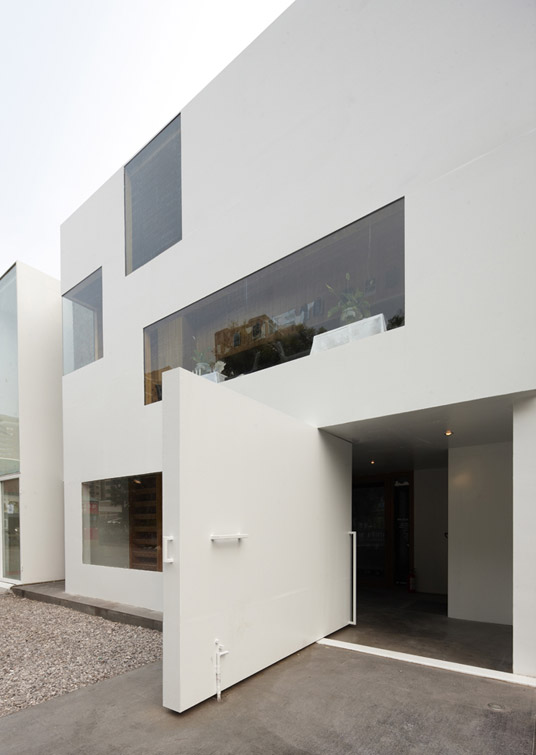
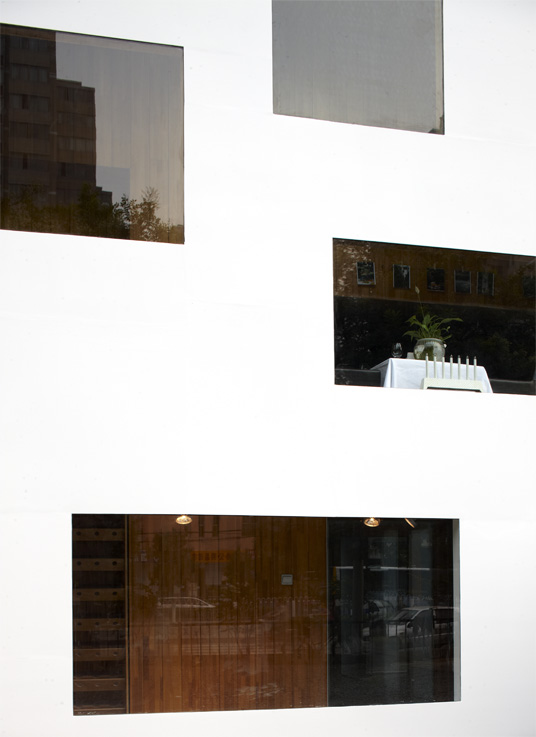
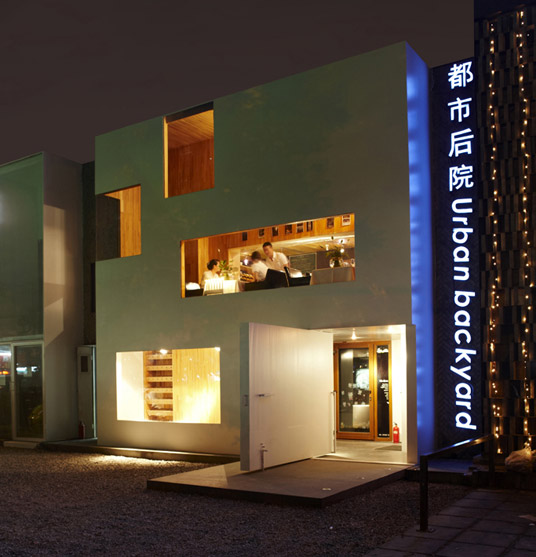

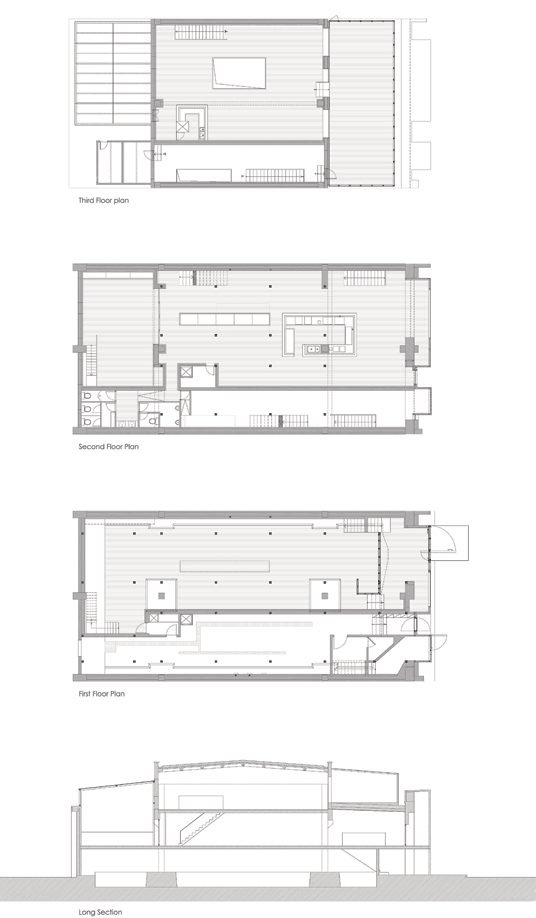
Located on Chengfu Road between Beijing University and Tsinghua University, urban backyard is renovated from part of a 10-module typical factory space. About 280 square meters in its size and measures at 12m(width) x 24m(depth) x 8m(height), the space occupies 2 modules of the overall 10 module industrial space.
Since standardarchitecture happened to have renovated the same two modules next to the “backyard” two years ago, as an experiment this time we choose to renovate the space with a completely different departure point. This time instead of merely focusing our attention on the discovery and exposure of the raw industrial space as we did last time, we are more curious on the possibilities of bringing in new programs and new public spaces. Is it possible to bring in separate programs into the small space? Is it possible to bring new means of urban life to the neighboring urban area? How much could a small scale renovation project influence the life of urban dwellers? In a city that is changing with unprecedented high speed and grand scale, what role could a small scale building renovation play in the overall urban transformation?
To create more space for all the new programs, we excavated 1.5 meters underground so that we are able to build a new 3-story steel structure inside the building. In the mean time the space was further divided into two independent parts: a 3x24 meter narrow deep space and a 9x24 meter rectangular space. Within the 9 meter width part, there is a music bar on the first level; a bookstore, a coffee shop and a sunny courtyard on the second level; and on the third level, there is an Italian restaurant. For the 3 meter width narrow space, the first level is the kitchen for the restaurant, the second level is an art gallery and the third level is office space. The sunny backyard on the second floor functions as a central space to organize all the different shops, and is becoming an interesting interior public space for the surrounding urban area.
Coinciding with the interior, the façade of the shops is designed as two separate shops. One is the gallery and the other the bookstore, coffee shop and restaurant. The gallery façade is a pure masonry volume built out of local grey brick, with the door also built of bricks. The book and coffee shop façade is constructed by a layer of 6mm thick steel panels,and random textures of the steel panels were carefully preserved.
Main entrance of the urban backyard is designed as a thick steel wall that could be rotated into a position that is perpendicular to the façade. The rotating wall becomes an intriguing message for the passing biers that the space inside has been transformed into a unique public space that invites all sorts of urban activities.
“都市后院”位于北大清华之间的成府路上,由一个长达十个开间的珩车车间的两跨空间改造而成。空间原有面积约280平米,宽12米,深24米,高8米,是一个典型的凸字形断面厂房中的一段。
有趣的是“标准营造”两年前就改造了它旁边同样空间的一段厂房,而上次的改造是功能明确的一个店面,这次改造的出发点有了明显不同,我们已经不在满足于对 于厂房空间原有特质的发掘与表达,而是更加关心这次改造能给城市功能和公共空间带来什么样的变化,是否可能在原本很小的空间里引入多个相对独立的功能? 是否可能给原本乏味的城市片区带来更多活力?一个小小的建筑改造项目到底能给临近区域的都市生活带来多大的改变?在一个史无前例地高速变化的超大尺度城市 中这样的小尺度改造建筑能够扮演什么样的角色?
为了创造更多空间引入更多的功能,我们把室内地面下挖1.5米,这样就可以在厂房内建造一个三层的钢结构空间;同时整个空间分为3x24米和9x24米两 部分,9米面宽的部分每层都有不同的功能:一楼是酒吧,二楼是咖啡、书店、和阳光后院,三楼是意大利餐厅;3米面宽部分的一楼是厨房、二楼是画廊、三楼是 后勤办公室;这样建筑实际是由三个相对独立的功能和一个完全独立的画廊组成的了。位于二楼的“阳光后院”既是各个功能的中心空间,也是直接对城市开放的公 共空间。
建筑从外面看上去一目了然是两个独立店面,细高的画廊的立面是一色的竖向砌筑的灰砖,连入口的门都是灰砖砌的。书店、咖啡、餐厅部分的立面是6毫米厚的钢 板,我们有意保留了钢板本身的青灰色肌理。店面的大门是一面可以单面旋转的钢板墙,当这面墙向着街道打开时路过的人门才忽然意识到这间厂房已经变成了一个 属于城市的公共空间。